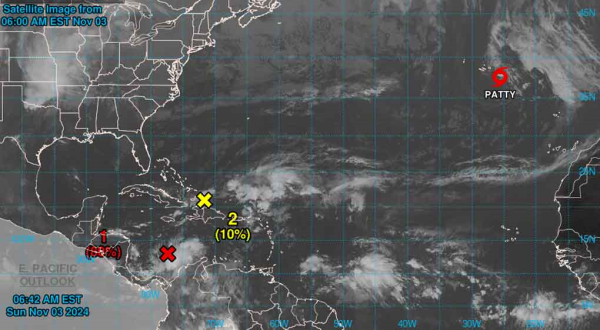KPL
(KPL/Prensa Latina) Experts raised the likelihood of the formation of a tropical depression to 80 percent, noting that the weather event will later become a storm as it advances northward through the Caribbean Sea, having high odds to hit Cuba.

(KPL/Prensa Latina) Experts raised the likelihood of the formation of a tropical depression to 80 percent, noting that the weather event will later become a storm as it advances northward through the Caribbean Sea, having high odds to hit Cuba.
The U.S. National Hurricane Center in its warning on this system, pointed out that the AL97 disturbance of the current Atlantic and Caribbean cyclonic season is showing disorganized rainfalls and thunderstorms in association with a wide area of low pressure over the southwestern Caribbean Sea.
The NHC alerted that a gradual development of this system is expected, and a tropical depression is likely to form within the next couple of days as it moves north-northwest over the central and western Caribbean Sea.
The Center further warned that regardless of development, locally heavy rainfalls are possible over portions of adjacent land areas of the western Caribbean, including Jamaica, Hispaniola, and Cuba.
The weather entity added that for those interested in the western Caribbean Sea, the progress of this system should be monitored, as experts could issue today or tonight tropical storm watches or warnings for portions of the area. The current hurricane season, which began on June 1 and officially ends on November 30, is in full force in its final days.
Meteorologists warned just a few days ago that this month at the end of the cycle could be very active, something unusual for the end of the period, since atmospheric conditions such as low wind shear and record high ocean temperatures are ideal for the development of low pressure systems that can become hurricanes.
This is associated with the Madden-Julian Oscillation (MJO), an atmospheric wave that is generated in the tropics and travels around the world for 30 to 60-days term.
KPL